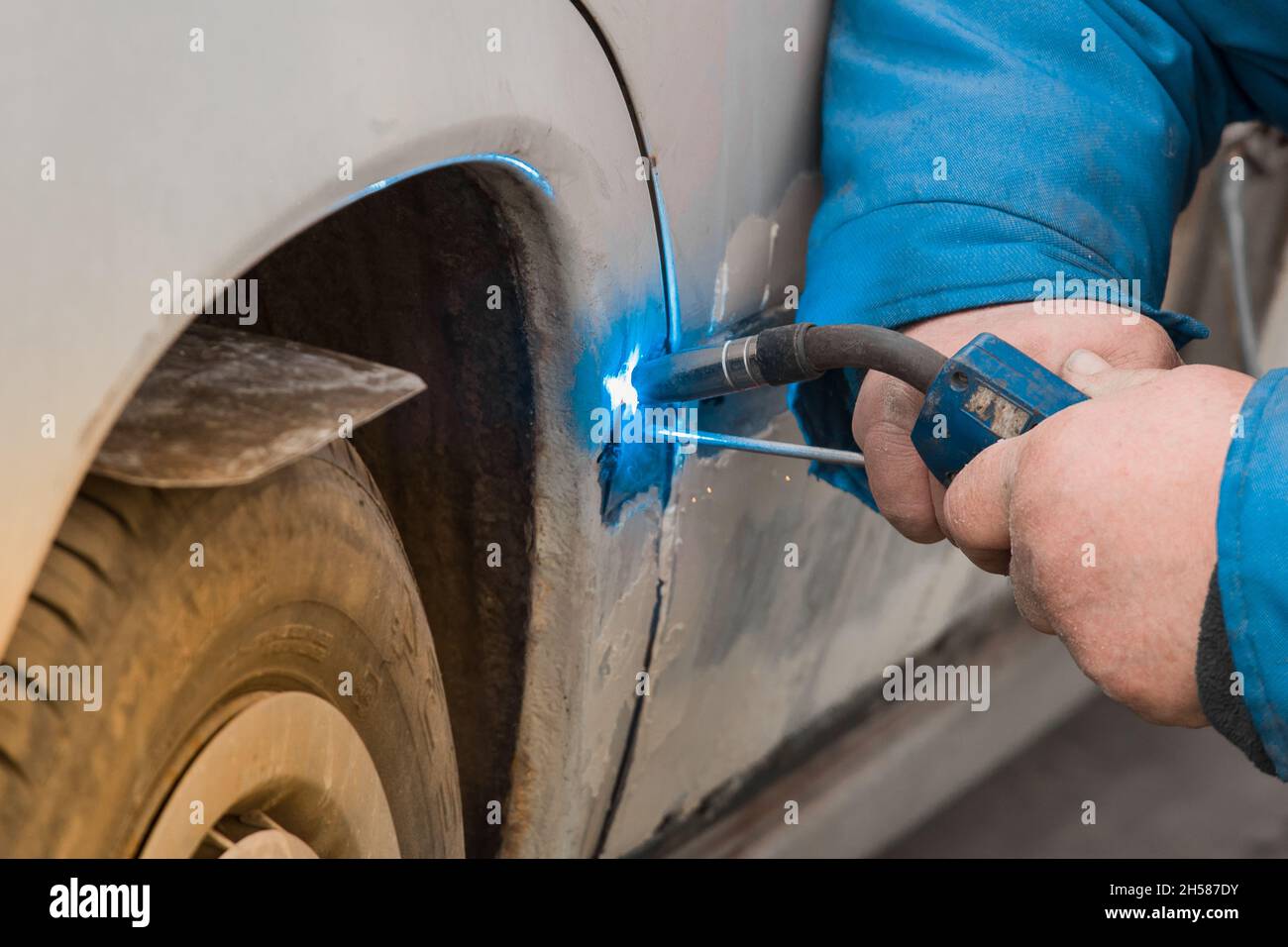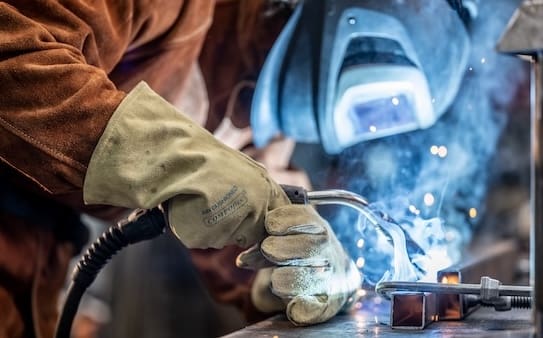Common Welding Repair Issues and Exactly How to Address Them Successfully
Welding repair work usually encounter a variety of problems that can threaten the stability of the end product. Common troubles consist of inadequate infiltration, porosity, and misalignment, among others. Each problem presents special difficulties that need particular techniques for resolution. Understanding these problems is essential for welders aiming to enhance their end results and skills. This conversation will discover these typical welding repair work issues and reliable techniques to address them.
Poor Penetration
Insufficient infiltration takes place when the weld metal fails to completely fuse with the base material, leading to weak joints and potential architectural failings. This concern commonly comes from not enough warm input, incorrect electrode angle, or improper welding speed. Welders might come across inadequate infiltration because of a mistake of the required criteria for a certain product density or type. Furthermore, contamination on the base product's surface can impede effective bonding, intensifying the problem. To address insufficient infiltration, welders ought to guarantee ideal setups on their devices and keep a clean work surface. Regular examination of welds is suggested to recognize any shortages early, permitting for prompt improvements and the avoidance of compromised architectural honesty in bonded settings up.
Porosity
Porosity is a typical issue in welded joints that manifests as little gas bubbles caught within the weld steel. This defect can jeopardize the integrity of the weld, bring about decreased stamina and prospective failure under stress and anxiety. Montana Mobile Welding and Repair. Porosity typically arises from contamination, moisture, or inappropriate welding techniques, which allow gases to leave into the molten weld pool. To resolve porosity, welders ought to guarantee appropriate surface area preparation, preserve a clean workplace, and utilize appropriate welding criteria. Additionally, selecting the ideal filler product and shielding gas can reduce gas entrapment. Regular assessment and testing of welds can assist determine porosity early, guaranteeing timely corrective actions are taken, thus protecting the top quality and dependability of the welded framework
Misalignment
Imbalance in welding can arise from numerous aspects, consisting of inappropriate configuration and thermal development. Recognizing the root creates is crucial for reliable resolution. A number of adjustment methods are offered to straighten components and guarantee architectural integrity.
Sources of Imbalance
Welding imbalance frequently originates from a selection of underlying concerns that can compromise architectural integrity. One key reason is inappropriate fit-up of parts before welding, which can bring about gaps and uneven surface areas. Variations in thermal expansion during the welding procedure can likewise lead to distortion, specifically if the materials being joined have different coefficients of development. Additionally, insufficient securing and fixturing might fall short to hold parts securely in position, resulting in motion throughout welding. Poorly kept devices, consisting of welding equipments and devices, might introduce variances in the weld bead, additional adding to misalignment. Operator mistake, stemming from not enough training or experience, can additionally play a considerable function in creating misaligned welds.

Improvement Methods Available
Resolving misalignment successfully calls for a mix of corrective methods tailored to the certain concerns handy. One common technique is using jigs or fixtures to hold elements in the right placement throughout welding, making sure consistent positioning. Furthermore, pre-heating the products can help in reducing distortion and improve fit-up. For significant misalignment, mechanical realignment techniques, such as making use of hydraulic jacks or clamps, can be employed to deal with the position prior to welding. Post-weld warmth therapy might also be necessary to soothe stress and anxieties brought on by misalignment. Cautious assessment and adjustment throughout the arrangement phase can protect against misalignment issues from ending up being substantial issues, promoting a smoother welding procedure and boosting overall architectural integrity.
Distortion
Distortion is a typical obstacle in welding that can develop from various variables, including unequal home heating and cooling. Recognizing the reasons of distortion is crucial for executing effective prevention methods. Resolving this issue not just enhances structural integrity but additionally boosts the overall high quality of the weld.
Root causes of Distortion
When based on the intense warmth of welding, products typically undertake adjustments that can bring about distortion. This phenomenon primarily arises from thermal development and contraction during the welding procedure. As the weld area heats up, the product expands; upon air conditioning, it acquires, which can develop internal stress and anxieties. On top of that, unequal heating throughout a work surface can intensify these stresses, leading to bending or flexing. The kind of product additionally plays a substantial function; steels with differing thermal conductivity and coefficients of development might respond differently, causing unpredictable distortions. Poor joint style and inadequate fixturing can add to imbalance throughout welding, boosting the likelihood of distortion. Comprehending these reasons is essential for reliable welding repair and prevention approaches.
Avoidance Techniques
Efficient prevention methods for distortion throughout welding concentrate on controlling warm input and ensuring correct joint design. Maintaining a regular warm input aids to lessen thermal development and tightening, which can cause distortion. Making use of techniques such as pre-heating the workpiece can also decrease the temperature level slope, advertising consistent heating. Furthermore, selecting suitable joint layouts, such as T-joints or lap joints, can improve security and lower stress and anxiety focus. Implementing correct fixturing to safeguard the work surfaces in place additionally help in maintaining placement during the welding process. Staggered welding series can distribute warmth more uniformly, avoiding local distortion. By applying these techniques, welders can greatly decrease the probability of distortion and boost the overall top quality of their welds.
Splitting
Breaking is a typical problem run into in welding repair services, often arising from various variables such as improper air you can look here conditioning prices, material selection, or inadequate joint preparation. The occurrence of splits can substantially jeopardize the integrity of the weld, bring about prospective failings throughout procedure. To resolve this problem, welders should first assess the source, guaranteeing that materials are suitable and appropriately picked for the details application. In addition, managing the air conditioning rate throughout the welding procedure is vital; rapid air conditioning can generate stress and lead to breaking. Correct joint style and prep try these out work additionally add to minimizing the danger. Applying these techniques can boost weld high quality and durability, eventually minimizing the possibility of breaking in finished weldments.

Incomplete Fusion
A significant concern in welding fixings is incomplete blend, which occurs when the weld metal does not effectively bond with the base product or previous weld passes - Fabrication. This defect can lead to weak points in the joint, potentially compromising the stability of the bonded structure. Aspects adding to incomplete blend include inadequate warm input, improper welding method, and contamination of the surface areas being joined. To resolve this problem successfully, welders ought to assure correct pre-weld cleaning and surface area preparation, in addition to adjust their welding specifications to accomplish adequate penetration and blend. Regular examination throughout the welding procedure can likewise assist determine insufficient combination early, enabling prompt corrective actions to enhance the total high quality of the weld
Overheating
While welding repair work can enhance architectural honesty, overheating presents a substantial difficulty that can result in material destruction. Extreme warmth during welding can modify the mechanical properties of metals, causing decreased toughness, boosted brittleness, and bending. This phenomenon is specifically essential in high-stress applications where structural dependability is vital. Determining getting too hot can entail aesthetic assessments for staining or distortion, as well as keeping an eye on temperature throughout the welding procedure. To reduce the dangers connected with overheating, welders ought to utilize ideal strategies, such as regulating heat input, readjusting traveling rate, and using ideal filler materials. Furthermore, implementing pre- and post-weld warmth therapies can assist recover product homes and improve the overall top quality of the fixing, guaranteeing long-lasting performance hop over to these guys and safety and security.
Regularly Asked Inquiries
What Are the Usual Indications of a Welding Flaw?

Exactly How Can I Check My Welds for Top quality?
To check welds for quality, one can use visual examinations, ultrasonic testing, and radiographic methods. Each technique guarantees structural integrity, determines flaws, and verifies adherence to specified requirements, eventually improving the reliability of the bonded joints.
What Safety and security Safety Measures Should I Take While Welding?
When welding, one must focus on security by using suitable personal protective devices, ensuring appropriate ventilation, safeguarding flammable materials away, keeping a clean office, and being conscious of surroundings to stop mishaps and injuries.
Can I Fix a Weld Without Remodeling the Entire Joint?
Fixing a weld without redoing the entire joint is possible, depending upon the damages (Welding). Strategies such as grinding, adding filler material, or utilizing a welding process can effectively address certain imperfections while maintaining the surrounding structure
What Equipment Are Crucial for Efficient Welding Repair Works?
Important devices for effective welding repairs consist of a welding device, wire brush, mill, protective equipment, clamps, and filler products. Each device plays a crucial role in making certain top quality and security throughout the repair service procedure. Porosity normally arises from contamination, wetness, or inappropriate welding techniques, which enable gases to run away into the liquified weld pool. Badly conserved tools, including welding equipments and tools, may introduce variances in the weld bead, additional adding to misalignment. When subjected to the intense heat of welding, materials frequently undergo changes that can lead to distortion. Splitting is a typical problem encountered in welding repair services, frequently resulting from different aspects such as incorrect air conditioning rates, product option, or inadequate joint preparation. A substantial problem in welding repair work is incomplete combination, which occurs when the weld steel does not sufficiently bond with the base material or previous weld passes.